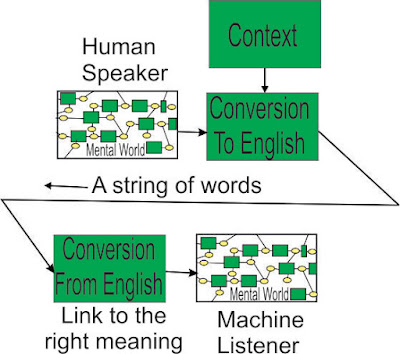Clumping
Most noun phrases will need the components to be clumped. Together
with any prepositional phrases hanging off the components.
Some examples:
An imaginary
flat surface
“imaginary” operates on an object – the object being “flat
surface”, so this needs to be clumped before applying “imaginary”, giving
An (imaginary
(flat surface))
The clumping looks like
“maths teacher” is turned into “teacher of mathematics”.
The same concept applies to clauses:
He knew
((there would be trouble) and (he would be blamed))
The “and” is functioning as a structural element (as in “Jack
and Jill”). A separate logical AND distributes a logical value to the subordinate
clauses from a logical connection on the “knew” relation.
Some more examples from dictionary definitions
(thin (inert ((surface layer) of
oxide))
a (broad (fast-moving (mass of
flames)))
a (common ((viral infection) in pigs))
The effect is that a definition clumps words into objects,
which are operated on by other objects having definitions – it is definitions
all the way down.
This is a million miles away from Deep Learning or PaLM, where
we choose not to tell the machine what it would need to know to “understand”
the text, then have learned discussions on why the text is not well understood.
People do a great deal of language processing unconsciously, and then because it is unconscious, are blissfully unaware of it. We need to become aware of it - it is not like teaching a child, who shares the same mental apparatus, so much need not be said.




Comments
Post a Comment